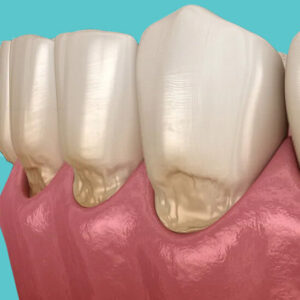Therapy
Therapeutic dentistry is one of the most well-known and important branches of dentistry. It focuses on the prevention and treatment of dental issues. Thanks to therapeutic intervention, oral diseases are diagnosed and prevented in time. Preventive measures help maintain the natural, healthy, and beautiful appearance of teeth for a long time. When to contact a dental therapist:
- You have a toothache,
- Cracked teeth,
- Gum bleeding,
- Tooth fracture,
- Discoloration and stains on the enamel,
- Teeth are sensitive to various stimuli,
- The filling has fallen out,
- Presence of unpleasant odor from the mouth,
- Presence of dental plaque and calculus.
Therapeutic dentistry includes:
- Carious lesions,
- Complications resulting from cavities,
- Non-caries-related issues,
- Gum diseases,
- Restoration of the anatomical appearance and color of teeth.
Tooth Filling
Dental fillings are among the most common dental procedures. Due to fillings, the anatomical appearance and function of the tooth are restored. It’s crucial not to delay the filling, as it may lead to nerve inflammation and, eventually, tooth fracture or even tooth loss.
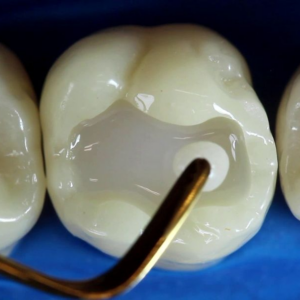
Pulpitis (inflammation of the nerve)
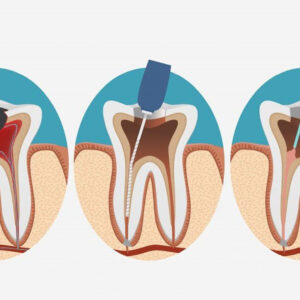
Many patients seek treatment with acute toothache, the majority of which is inflammation of the tooth nerve (pulpitis). The main cause of pulpitis is dental caries. In case of nerve inflammation, there is acute local pain during the first two days, later the pain becomes unbearable and radiant. In case of pain, you should immediately contact a dental therapist.
Periodontitis
Periodontitis is an inflammation of the periodontal tissue, which has acute and chronic stages. Periodontitis occurs as a result of incomplete treatment of the root canal of the tooth, as well as from trauma. Chronic periodontitis is accompanied by bone destruction, which, if left untreated, leads to a significant bone defect. During the acute process, there is severe pain in the tooth area, the pain intensifies when the tooth is touched, swelling and redness in the gum area may occur.
Treatment. Treatment is aimed at preserving the tooth and eliminating the existing inflammatory process. Accurate pharmacological treatment of the root canals should be done, followed by a root filling. The tooth should be under X-ray control for the upcoming months to assess the effectiveness of the treatment.
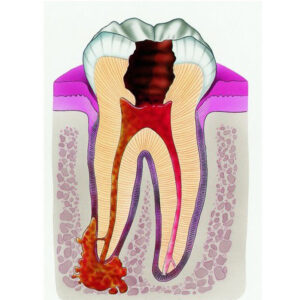
Gingivitis (gum inflammation)
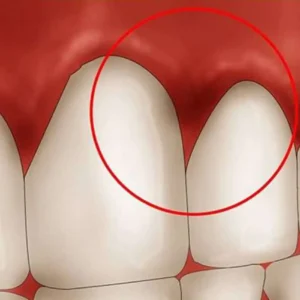
Gingivitis is gum inflammation that does not involve damage to the periodontal system. There are three types of gingivitis: catarrhal, hypertrophic, and ulcerative necrotizing. The causes of gingivitis are numerous, ranging from poor oral hygiene to ill-fitting crowns and sharp edges of fillings. Gingivitis begins with bleeding gums, redness, and in some cases, itching. If left untreated, the gum papillae may swell, and the inflammation will be characterized as hypertrophic gingivitis. Later, ulcers may form, and the tissue may necrotize. Treatment involves identifying and eliminating the factor causing the inflammation. General and localized anti-inflammatory therapies are done, and depending on the situation, surgical intervention may also be required.
Periodontitis
Periodontitis is an inflammatory disease that is accompanied by changes in the quantity and quality of bone. It is classified into acute and chronic stages of inflammation. The causes of periodontitis include improperly made orthopedic constructions, sharp edges of fillings, poor oral hygiene, and somatic diseases. During periodontitis, gum pockets first form, followed by bone pockets, which are classified based on their depth:
- Type I, when the depth of the pocket is 3-4 mm,
- Type II, when the depth of the pocket is 5-6 mm,
- Type III, when the depth of the pocket is 6 mm or more.
Treatment depends on the clinical case. There are conservative, surgical, and physiotherapeutic methods. Preventive visits can help prevent the development of periodontitis.
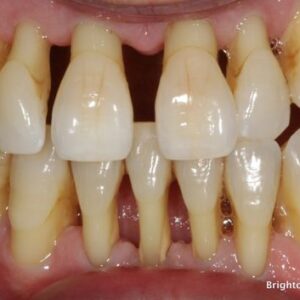
Professional Hygiene
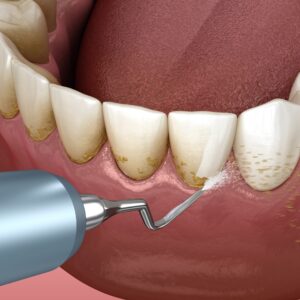
Teeth scaling and polishing are among the most common dental procedures. Calculus can be supragingival, subgingival, or subgingival. Initially, dental plaque forms, which, if is not removed, turns into dental calculus. Professional hygiene should be done once every 6 months. If not removed, calculus can cause damage to the teeth and gum tissue. Calculus removal is done using ultrasonic technology, then the subgingival plaque is cleaned using the Airflow system, which consists of a mixture of powdered powder and water. In the final stage, the teeth are polished with a special paste and brush.
Wedge-Shaped Teeth Defect
A wedge-shaped defect is a case of a non-carious cervical lesion that occurs after teething. It is characterized by a defect on the tooth in the cervical area. The wedge-shaped defect is mostly found in the frontal teeth and, less commonly, in the molars. The defect resembles a wedge, which is why it is named as such. A wedge-shaped defect is often found in middle-aged and elderly people. Treatment: After diagnosing a wedge-shaped defect, the tooth should be restored with dental filling material. If there is a large defect, dental crowning should be done. If the process progresses, it may lead to tooth fracture or even tooth loss.
